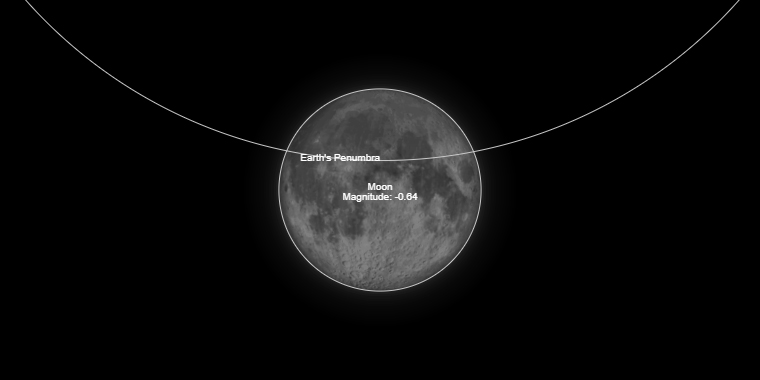Buck Moon Eclipse on July 4-5; moon to remain slightly darker than usual full moon
KATHMANDU: The second last eclipse of the year 2020, known as Buck Moon Eclipse, is happening early morning on July 5th, as per Nepal Standard Time. Alas, in Nepal, this event will be missed.
The full moon in July is traditionally known as the full buck moon based on the fact that the new buck's antlers start to grow from around this time of the year. It is known that the male deer sheds its antlers every year.
The moon will appear full to the eyes on the nights of July 4, 5 and 6 from almost everywhere around the world. Due to the fact that, around the full moon, the moon lies more or less opposite the sun and appears in Earth’s sky for most hours of the night.
The shade of the moon may turn slightly darker than a usual Full Moon for those in North and South America, and Africa during the maximum phase of this penumbral lunar eclipse.
The penumbral lunar eclipse will begin 5 Jul, 03:07:23 UTC (08:52:23 in Kathmandu) and will end at 5:52:21 UTC (11:37:21 in Kathmandu); it will be at its maximum at 4:29:51 UTC (11:14:51 in Kathmandu).
It is to be noted that since it is a penumbral eclipse, it can be hard to see, as the Moon will only be a bit fainter, hence it can be nearly imperceptible.
However, the month of July is not just about the eclipses but it is full of many other astronomical events and for skygazers and amateurs, there are plenty of opportunities to witness the 'activities' of planets in our solar system in the whole month.
At various dates and times in this month, the planets will come in opposition, that's when people can best take a look at these planets.
Planets Jupiter and Saturn will come near Earth and the sun, so that both Jupiter and Saturn reach their oppositions -- Jupiter on July 13-14 and Saturn on July 20.
So, astrophiles! Keep your eyes wide open this time of the year.






